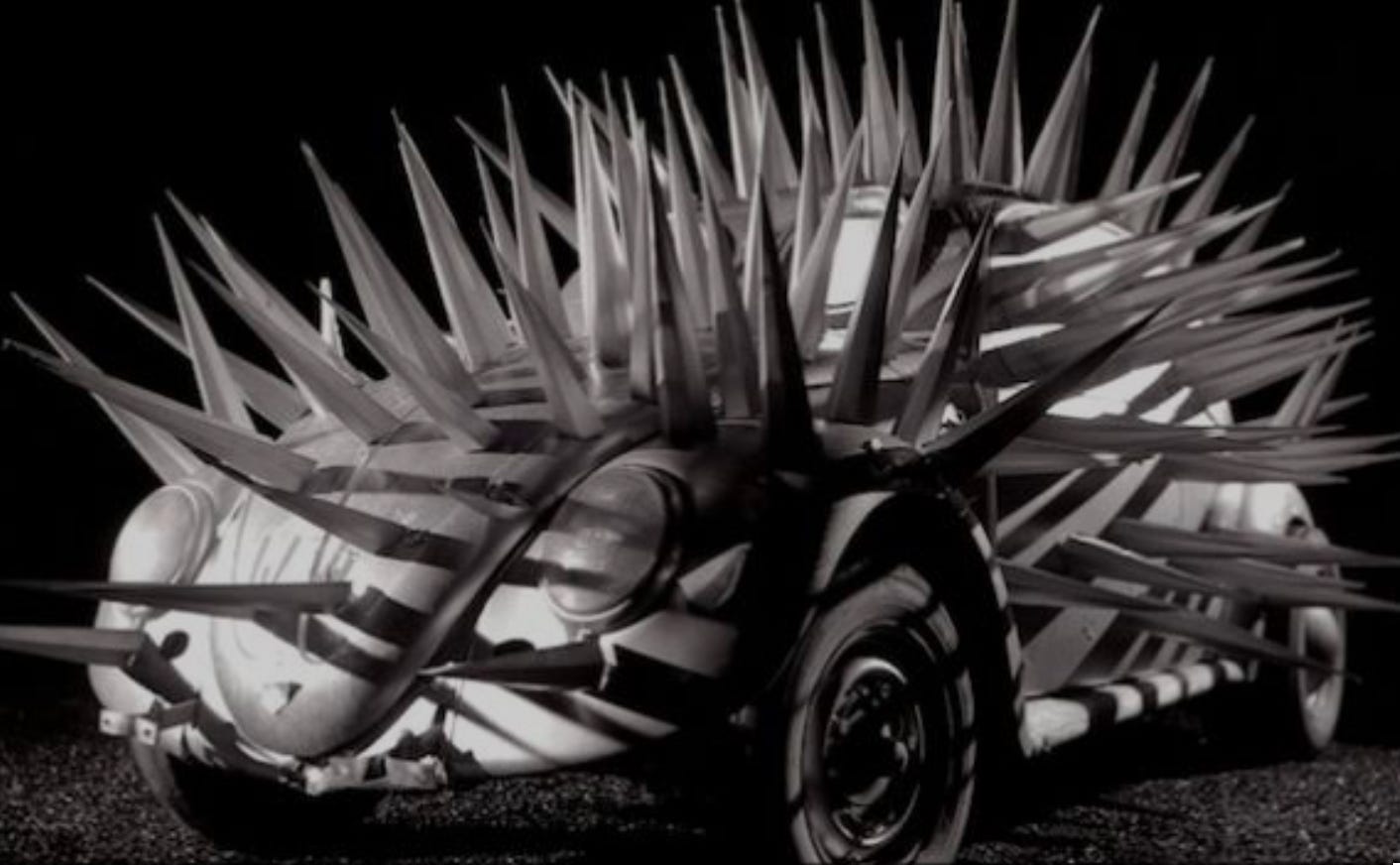Self driving bug
Been trying to spend less time reading online bullshit and more time with books and reviews. This was the first thing I read when I opened the London Review of Books…
Seeing cars with no human inside move through San Francisco’s streets is eerie enough as a pedestrian, but when I’m on my bicycle I often find myself riding alongside them, and from that vantage point you catch the ghostly spectacle of a steering wheel turning without a hand. Since August, driverless cars have been available as taxis hailed through apps but I more often see empty cars than ones with backseat passengers. These robots in the shape of cars don’t move like those with human drivers. While I waited next to one at a busy intersection, the vehicle first halted at the yellow light, then rolled into the intersection, where it stopped when the light turned red, confounding the traffic around it.
Still, I’ve become somewhat used to driverless cars in the years they’ve been training on the city’s streets, first with back-up human drivers, and then without. They are here despite opposition from city officials, including the fire chief, and San Francisco recently sued the California state bureau that gave companies licence to use the streets as their laboratory. Firefighters have reported driverless cars attempting to park on firehoses; last June one such car prevented emergency vehicles from reaching victims of a shooting; the vehicles are apparently unequipped to assess these situations and respond by stopping. Direct communication isn’t an option: the only way to get a driverless car to do anything is to contact the company in charge of it.
In early October, a driverless car owned by Cruise, a subsidiary of General Motors, hit a woman who’d just been struck by another car, and in the course of performing what was described as a rote ‘pullover manoeuvre’ dragged her twenty feet, mangling her badly and leaving her trapped under its wheels. The device was unable to detect that it was on top of a human and would not respond to rescuers, who had to lift the car off her.



The examples in that piece are truly horrifying. I think the description of driverless cars as "car shaped robots" is far more accurate, and should be deployed widely. Because "car shaped robot" has a whole different connotation to it than "driverless car". "Driverless car" brings to mind "horseless carriage" which is what first gen automobiles were described as, in which the propulsion mechanism (horse) is replaced by an engine, which in many ways was a boon to both horses and people, since fewer horses were brutalised and worked to death in service of transport once engines took over, and humans benefited from a form of transport with much less maintenance and care requirements, as well as the greater speed and pulling power of an automatic engine.
"Driverless car" implies something similar has happened in that the driver has been replaced by automation, so you can read your book on the way to work or something equally benign, but it disguises the fact that drivers have much greater responsibilities on the road than simply sitting behind the wheel. This current crop of autonomous vehicles is demonstrating a profound lack of understanding of both those responsibilities and the nuances required to navigate them, such that the benign connotation of "driverless car" doesn't begin to convey the gulf between it and "horseless carriage".
"Car shaped robot" implies an otherness to these devices that "driverless car" does not, and that otherness would serve us well in evaluating the way these machines engage not just with other road users, but with the people and infrastructure that surround them.
Really problems with the techbros driverless cars you say, wHy DiDn'T aNyOnE SaY tHiS mIgHt HaPpEn.